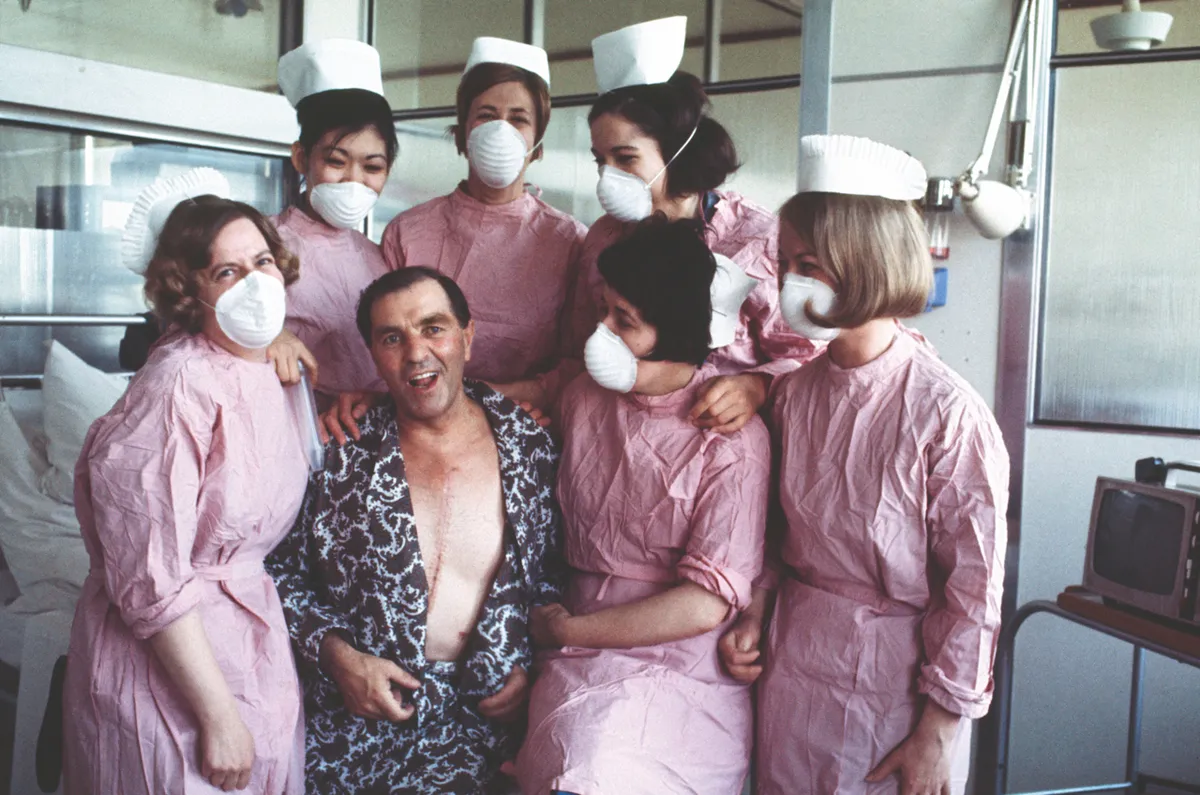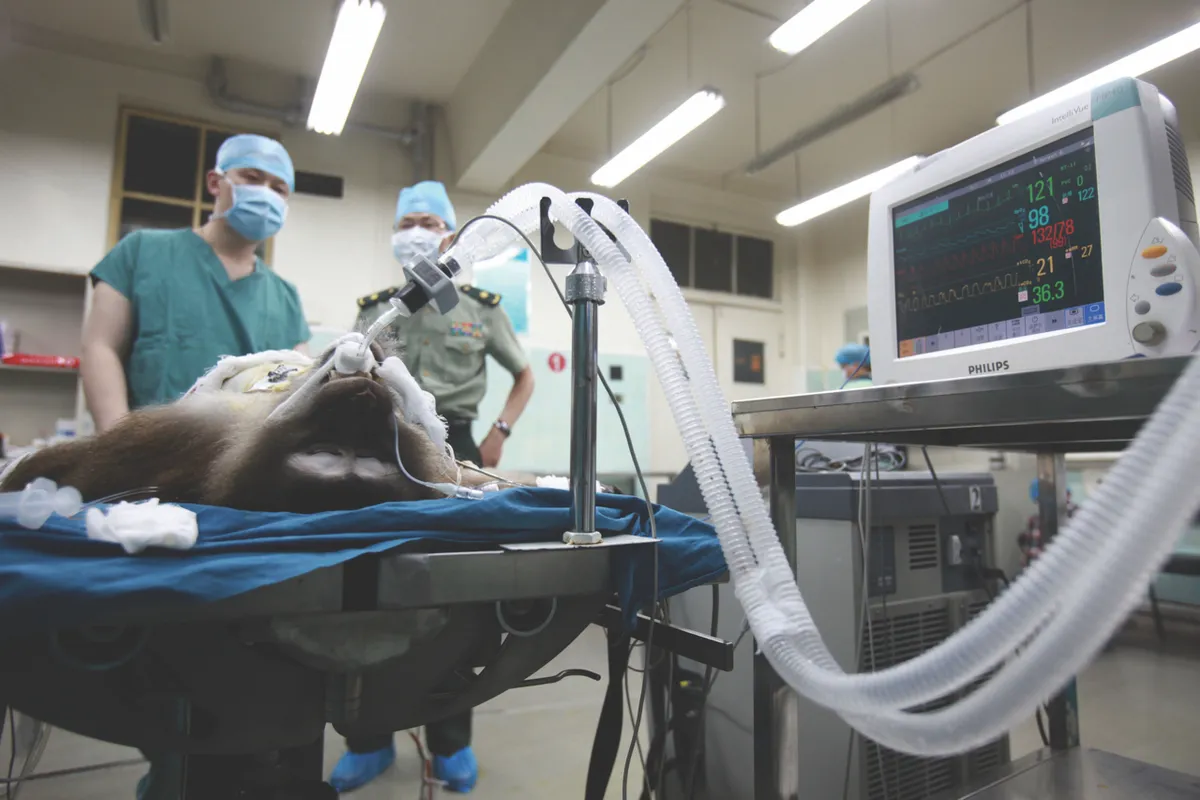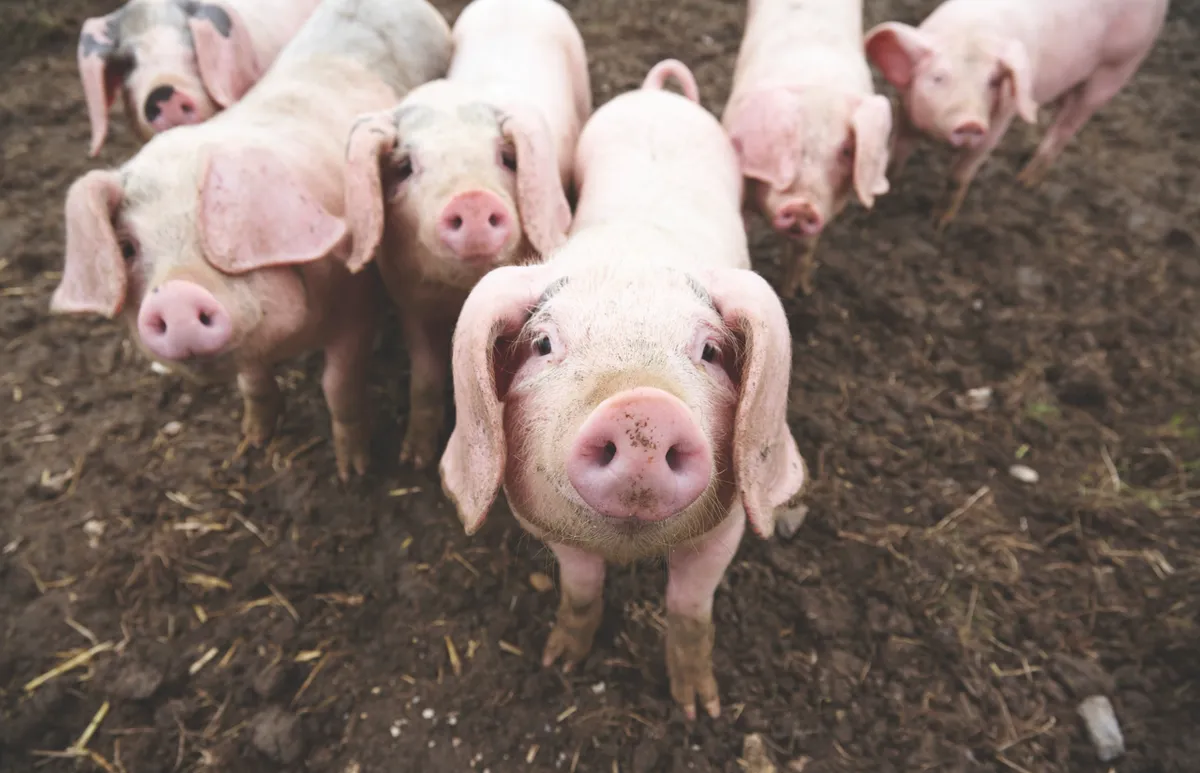In 2016 it was announced that researchers at the National Institutes of Health (NIH) in the US had kept a genetically engineered pig’s heart beating in a baboon for three years. Though it was undoubtedly a headline-grabbing story, there are serious implications for the research. Every year, several million people die worldwide because of transplant shortages. There just aren’t enough human organs from tragedies like road accidents to go around. But some scientists are working on a radical solution – to use organs from animals.
Xenotransplantation, as the procedure is known, may sound like something from a science fiction movie but doctors and scientists have been trying to develop it for decades. Back in 1984, Stephanie Fae Beauclair, generally known as ‘Baby Fae’, was born with a heart defect that would have killed her within a week or so. At that time, transplants using infant human hearts were nearly always unsuccessful. But her surgeon, Leonard Lee Bailey, was a pioneer in animal-animal transplants so decided to try transplanting a baboon heart. The hope was that it would allow Baby Fae to live long enough for a second operation to replace the baboon heart with a human one.
The surgery was initially a success, but Baby Fae died 21 days later when the heart was rejected by her body. Nevertheless, her sad story marks the first serious attempts at xenotransplantation. But 30 years on there are still many questions to be answered. Is xenotransplantation even feasible, and is it ethical?
Beating the immune system
Our immune system is a wonderfully complicated collection of cells and organs that helps to protect us against any foreign bodies that invade and cause disease. Intruders, such as viruses or harmful bacteria, are attacked by highly specialised cells. Each of us has the physiological ability to recognise that our body and its organs are ‘ours’ and that invading objects are not. So while the white blood cells and other components of our immune system attack foreign biological objects inside us, they do not attack us. The advantage of this is obvious: disease-causing organisms can be attacked and destroyed without the body turning against itself.
However, there is a serious downside when it comes to transplantation. The immune system can recognise the transplanted organ as foreign and attack it. To prevent this, patients receiving human-to-human transplants generally have to be given large doses of immunosuppressants to damp down the immune system and prevent it from attacking the transplanted organ. Unfortunately, patients with suppressed immune systems are less able to fight off germs, so they are more likely to catch infections. With a weakened immune system, even common diseases can prove very serious. However, this is less of a problem with the latest immunosuppressant drugs available.
When it comes to transplanting non-human organs such as a pigs’ hearts into humans, an extra difficulty arises. Within hours of the transplant, even if immunosuppressant drugs are used, so called ‘hyperacute rejection’ typically sets in and the transplant fails. In an attempt to overcome this problem, researchers are genetically engineering pigs to carry a single human gene that allows them to produce a human protein on the surface of their internal organs. It is hoped that this will trick the immune system into thinking the organ is human, therefore avoiding hyperacute rejection.

But rejection isn’t the only problem that we face if we receive a transplant from another species. Pigs are the species of choice for human xenotransplantation. They are about the same size as we are, they are easy to keep in captivity and their physiology is surprisingly similar to ours, despite being less closely related to us than apes and monkeys. However, a lot of nasty human diseases result from viruses that come from animals. Pigs can carry as many as 50 porcine endogenous retroviruses, endearingly abbreviated to ‘PERVs’. These are largely not harmful to the pig but can infect other species. This is what happened in 2009 when a pandemic caused by swine flu led to about 250,000 human deaths.
Do we need xenotransplantation?
Each year tens of thousands of lives are saved as a result of human-to-human transplants. Indeed, the large majority of people waiting for a transplant never receive one. So what can we do about this?
The purchase of human organs – a market-led ‘solution’ to the shortage – is generally illegal. Iran, however, is one of the few countries that permits the sale and purchase of kidneys. As a result, the waiting times for kidney transplants in Iran are much shorter than elsewhere in the world. The going rate is about $4,000, if you are interested…
However, the primary reason why most people waiting for a transplant never receive one is that there simply aren’t enough human organs to go around. There are several explanations for this. For one, the number of people who would benefit from a transplant continues to rise. This is partly because advances in transplant surgery mean that it is now possible to transplant more organs, and partly because an increasing range of medical conditions can now be treated by transplantation.
Another point to take into consideration is the fact that only a tiny proportion of deaths result in organs that are suitable for use in transplants. Deaths from motor vehicle accidents provide a high proportion of suitable organs. But thanks to improvements in road safety, the use of seat belts, improved car design, better roads, more speed limits, tougher driving tests and greater use of motorcycle helmets, the number of people killed in road accidents is falling.
A final issue is that many countries have some sort of ‘opt in’ rather than ‘opt out’ system for organ donation. This means that for a transplant organ to become available, the dead person needs to previously have expressed a wish for their organs to be used for transplantation – by carrying a donor card, for example – and doctors must also obtain the consent of the donor’s relatives.
Animal welfare
The extent to which animals can suffer is still argued, yet there is increasing acceptance that our closest evolutionary relatives have the necessary brainpower to experience suffering of some kind. A growing number of biologists and philosophers agree that, at the very least, the majority of mammals can suffer.
So would xenotransplantation lead to significant amounts of animal suffering? Consider, first of all, the pigs that are likely to be used. Companies involved in research on xenotransplantation maintain that their pigs are looked after extremely well. Indeed, in my experience, the animals used in the research are looked after better than pigs on most pig farms, in terms of the conditions in which they live. But there is more to the welfare of the pigs than their housing. For a start, the pigs used in the research are subjected to a number of surgical procedures. When clinical trials begin in earnest, it seems likely that ‘gnotobiotic’, or germ-free, animals will be needed. Such animals would probably be obtained by what is sometimes called ‘surgical derivation’. This means that shortly before birth, the entire uterus with the piglets still inside would be removed from the mother. The piglets would then be raised in isolation and in sterile conditions. From the pigs’ point of view, this doesn’t sound like much of a life, as pigs are social creatures.

Furthermore, it is not only pig welfare that needs to be considered. Current research aimed at improving the success of xenotransplantation has meant that thousands of primates, including captive-bred macaques and wild-caught baboons, have already been used in surgical operations as recipients of the transplants. When viewing many of these operations from the perspective of the scientists, surgeons, and ultimately the patients and shareholders who may benefit, many of these operations are deemed a research ‘success’. From the point of view of the non-human primates, however, there’s little doubt that these operations lead to considerable pain and a dramatic shortening of lifespan.
Natural vs Unnatural
Let us assume that xenotransplantation will require the genetic engineering of pigs through the insertion of one or more human genes into pig DNA. This involves changing the ‘nature’ of the pigs in at least some sense. Is this morally acceptable?
A frequent cry against genetic engineering of any sort is that it’s ‘unnatural’. However, this objection is difficult to defend. After all, what is ‘natural’? Smallpox, tidal waves and death are natural, whereas vaccines, mobile phones and foreign holidays are not. In other words, in everyday language, there doesn’t seem to be much of a relationship between what is ‘natural’ and what is good.
Even so, the ‘unnatural’ argument still has its defenders. A number of religions argue that, at least to some extent and in some sense, nature is good. In the Jewish and Christian traditions, the understanding is that on the sixth day “God saw everything that he had made, and behold, it was very good”. Death and decay entered the world through sin, but even after the fall of man, enough of God’s goodness is present in the creation for much that is natural to be good. An entire theology of natural law has built up around this notion.
Nature is also seen as an indicator of goodness by many others, including those who do not follow any religion. To this day, there is a considerable body of opinion holding that ‘natural’ practices are preferable to their ‘artificial’ alternatives. Common examples include the ‘breast is best’ campaign for child nutrition, organic farming and the call to eat fresh rather than processed food.

Yet one great advantage of nature is that it has been around for quite a while. Consciously or otherwise, many of us think that our ancestors successfully brought up children,
farmed and prepared food in ‘natural’ ways, so these traditional approaches must be okay. After all, and quite logically, one cannot be sure about the long-term consequences of any new technology, genetic engineering included, only of practices that have been around for a considerable time and are now considered ‘natural’.
But does the type of genetic engineering really change the nature of pigs? From the pigs’ point of view, it can be argued hardly at all. The practicalities of genetic engineering have significant welfare implications but it seems difficult to argue from a pig’s perspective that the genetic engineering itself has changed its nature. The pig’s behaviour is no different; its mental capacities and experiences are unchanged. The only difference is that it produces an extra internal protein. Traditional breeding, on the other hand, has resulted in incredibly significant changes to the natures of farm animals, including, for example, increased tolerance of high stocking densities, increased domesticity, and massive changes in milk, wool and meat production.
How would you feel?
How would you feel about the thought of a pig’s heart inside you? It is difficult to predict and would likely vary from person to person. Some people might condemn the idea on the ground that it is unpleasant or unnatural, but then the alternative may be death, which most of us don’t like much either. It’s worth noting that when human-to-human heart transplants were first introduced, some commentators said that they were deeply immoral. Yet we rapidly got used to the idea of human-to-human transplants, and most people on the receiving end are deeply grateful for them. Could we see the same thing with xenotransplantation? Only time will tell.
To find out more about organ donation, call 0300 123 2323 or visit organdonation.nhs.uk
This essay first appeared in issue 297 of BBC Focus magazine – for the latest science news, innovations and discoveries delivered straight to your door subscribe here.